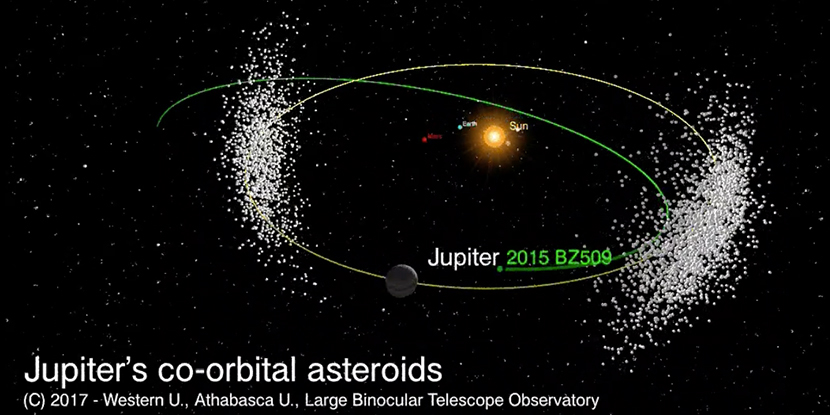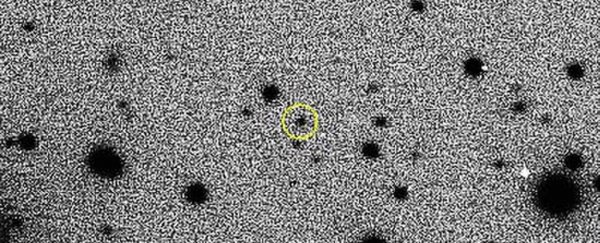If you looked down on the Solar System from high above the Sun's North Pole, you'd see that most of the planets and chunks of rock and gas circle in a counter-clockwise direction.
There is, however, a handful of crazy exceptions that buck that trend, including a recently identified and very strange asteroid that isn't only going the 'wrong' way, but has been hell bent on risking suicide for at least a million years or so.
While the 3-kilometre (1.8-mile) diameter asteroid BZ509 (or 'Bee-Zed' for short) was discovered back in 2015 moving through the same neighbourhood as Jupiter (not to mention 6,000 other asteroids), only recently has a team of astronomers confirmed what was initially suspected – it has what's called a retrograde orbit.
The astronomers had to collect enough snapshots of the asteroid over time to determine its orbital path, which was odd enough for them to do a double take.
Thanks to the starting conditions of the swirling dust and rock that gave birth to our Sun and its family of planets, most stuff in the Solar System moves in a 'prograde' orbit, following our parent star's rotation.
Sometimes chance encounters will spin or knock an object out of its way and send it flying the other direction, but it's pretty uncommon - in fact, of the 1 to 2 million boulders larger than a kilometre (0.6 miles) estimated in the asteroid belt, 82 have been spotted sailing against the current.
Comets falling in from the outer stretches of the Solar System are also occasionally known to have this mad orbit, including the famous one named after Edmund Halley.
So the little champ Bee-Zed – whose composition is currently unknown, and could possibly be a distracted comet itself – isn't completely alone in its defiance; however it is unusual in its sheer fortune.
In addition to being retrograde, it is also what's called co-orbital with Jupiter, having an orbit that brings it close enough to the giant to respond to the enormous tug of its gravity.
Had it fallen into a prograde co-orbital configuration, Bee-Zed would probably be one of the 6,000 or so known 'trojan' asteroids that occupy Jupiter's orbit like a crowd of rocky little groupies.
 Western University, Athabaska University, Large Binocular Telescope Observatory
Western University, Athabaska University, Large Binocular Telescope Observatory
Yet here we have a tiny rock that swings close to Jupiter twice an orbit without being swallowed up, avoiding collision with the few thousand asteroids in its path, and it seems to have been doing so for at least a million years.
According to the researchers, it all comes down to a regular balance of pushing and pulling – as the asteroid passes on the inside of Jupiter's orbit, it is pulled towards the planet just enough to pass on its outside the next orbit. Oh, and a bit of luck as it slips through the wide spaces between the rest of the asteroids.
Ironically, if it wasn't for Jupiter's gravity, it's possible that poor little BZ509 would have met its end by now, accidentally careening into the gas giant in one of its many passes.
But the fate of Bee-Zed is looking fairly bright, as the astronomers think this snaking orbit is stable enough to allow it to potentially last another million years, unless its luck runs out and it happens to butt heads with one of the trojans.
"This is not what one would expect to be a very long-lived situation, but this study shows that BZ has done so safely for at least tens of thousands of 'laps,' avoiding [Jupiter] by weaving in and out of the planet's path every time they pass," one of the researchers, Paul Wiegert, from Western University in Canada, told Hanneke Weitering at Space.com.
Wiegert explains this unusual "cosmic game of chicken" in more detail in the video below.
Bee-Zed hasn't given up all its secrets yet, so there's plenty of work to be done to determine if it's just a random anomaly, or if it represents something new about our Solar System.
As Wiegert says in the video, "The detective work has just begun".
This research was published in Nature.
